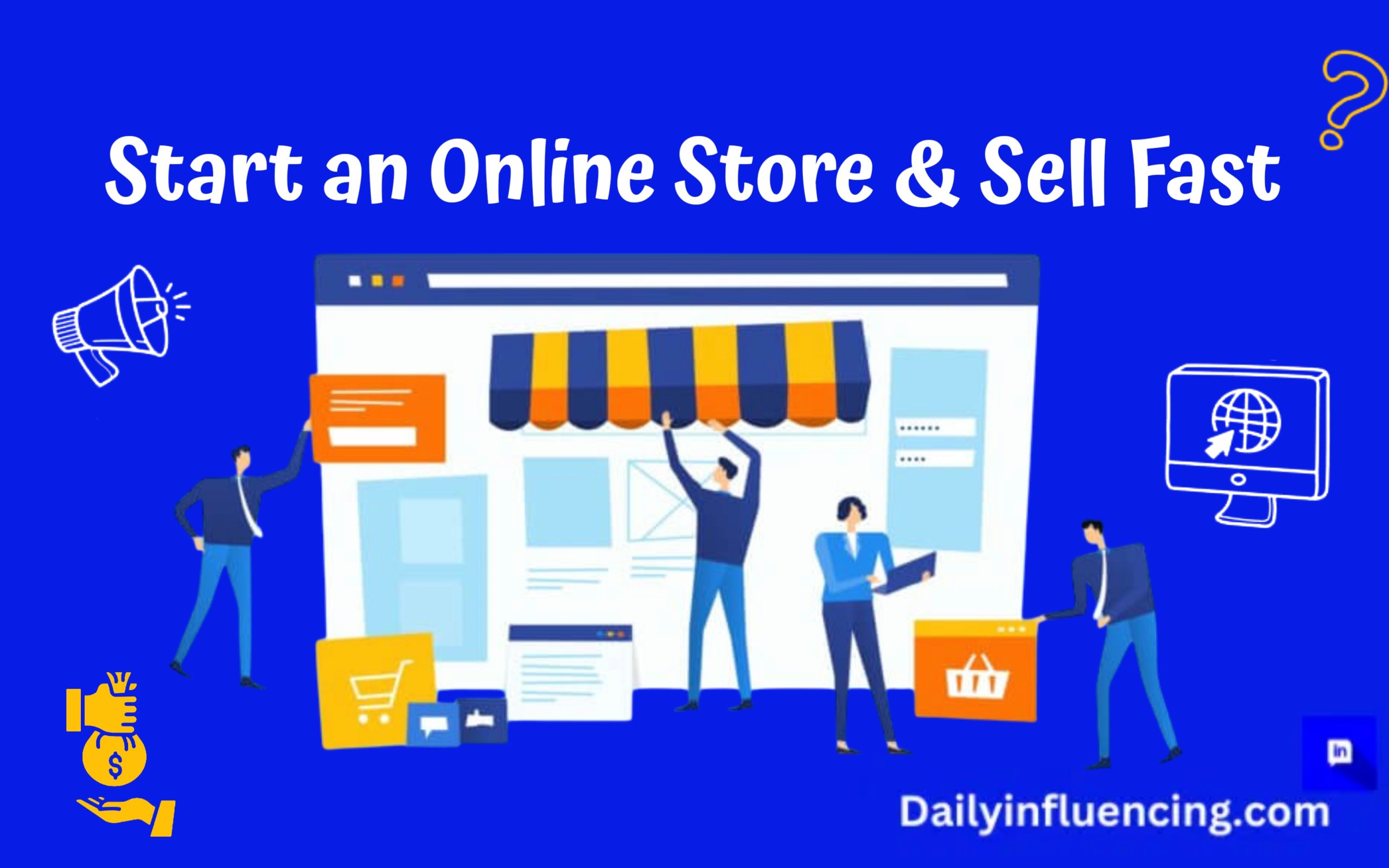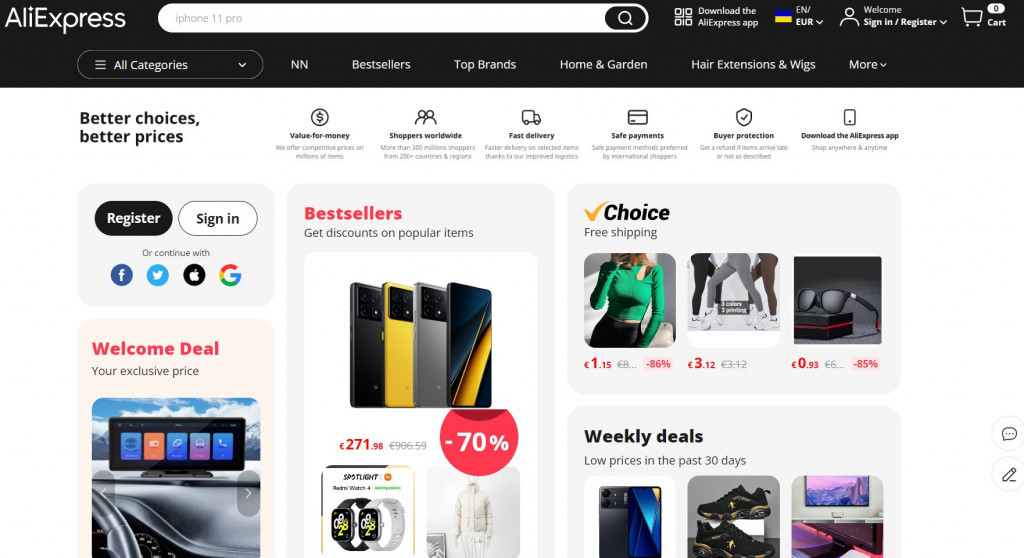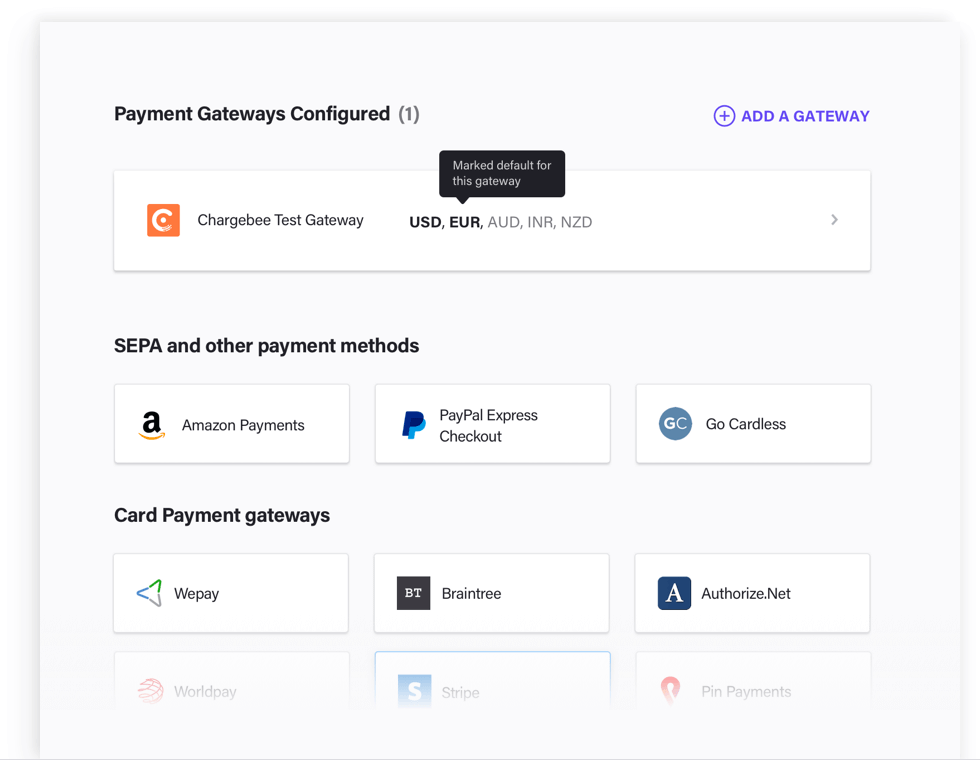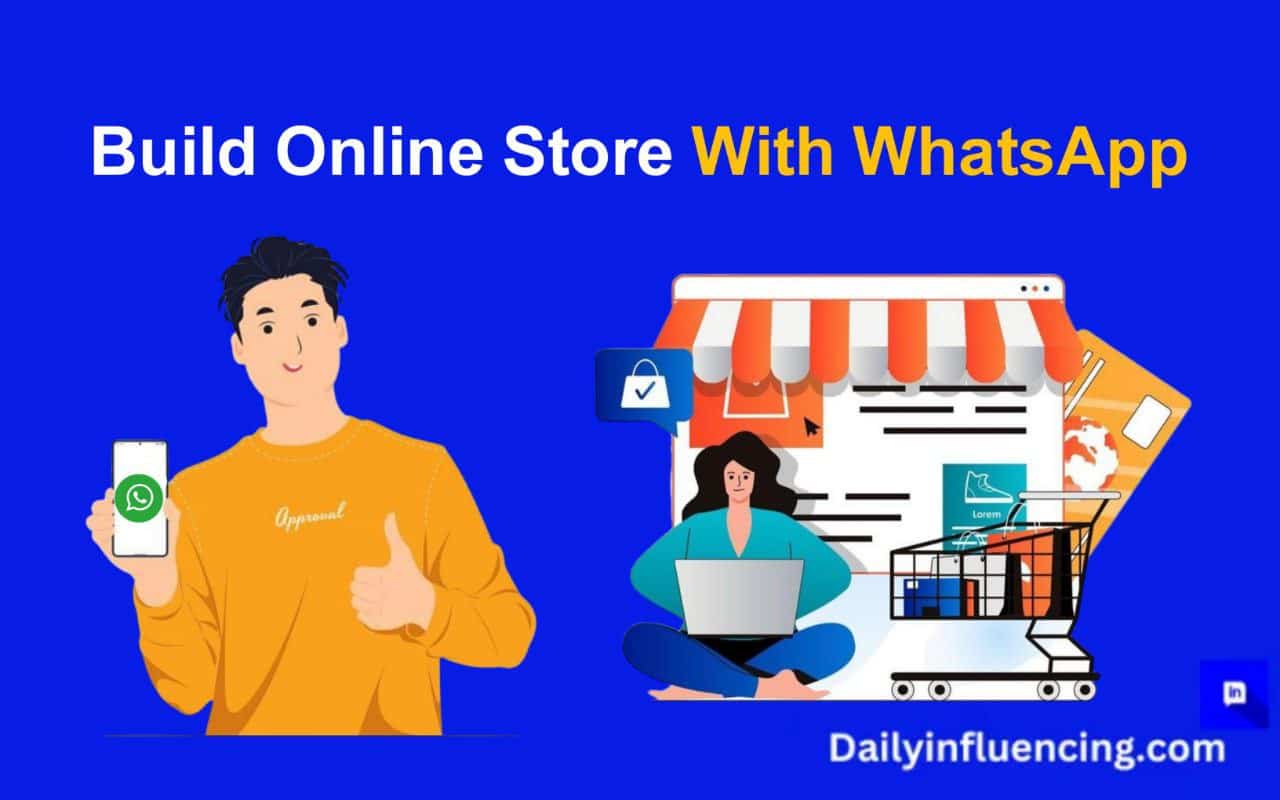
The online retail environment has transformed significantly in recent years, with global ecommerce sales projected to reach $4.32 trillion by the end of 2025. For aspiring entrepreneurs, there’s never been a better time to start an online store!
Whether you’re looking to turn a passionate hobby into a side hustle or build a full-fledged business empire, launching an ecommerce store offers unmatched flexibility, growth potential, and the ability to reach customers worldwide.
However, getting through the complexities of digital storefronts, product sourcing, and online marketing can seem overwhelming at first. This guide breaks down the essential steps to transform your online store dream into a profitable reality, regardless of your technical experience or business background.
Start an Online Store That Stands Out in Today’s Digital Marketplace
Starting an online store requires strategic planning and careful implementation to succeed in the competitive e-commerce terrain. This article provides a roadmap through every vital step—from researching profitable niches to optimizing your store for sustained growth—ensuring you build a solid foundation for your digital retail business.
Choosing What Products to Sell
What keeps me up at night sometimes is remembering those years ago when I poured all my savings into stocking products nobody wanted. I was eager to start an online store but skipped proper product research—an oversight that cost me dearly. Those boxes sat in my garage for months before I finally offloaded them at a painful loss.
Picking the right products to sell online is arguably the most important decision you’ll make for your store. Get it right, and you’ve built the foundation for success. Get it wrong, and well… you might end up with a garage full of unsellable inventory like I did.
1. Product Research Strategies
Trending vs. Evergreen Products: What to Sell When in your Online Store
First off, you need to understand the difference between trending and evergreen products.
Trending products can give you that exciting sales spike – I once caught the fidget spinner wave just right and made a killing in three months. But trends fade fast. My fidget spinner sales crashed harder than my first website when too many visitors hit it at once.
Evergreen products, on the other hand, maintain steady demand year after year. Think phone cases, pet supplies, or kitchen gadgets. They won’t make you an overnight sensation, but they’ll keep your business afloat even during slow seasons. So how do you actually find these golden products? Here’s my research process that I’ve refined after years of trial and error:
- Start with Google Trends to spot emerging product opportunities. I compare search volume over time to distinguish between temporary fads and growing markets using AI tools. This simple free tool has saved me thousands in potential inventory mistakes.
- Deep-dive into Amazon bestseller lists within your niche. I check these weekly and track which products stay in the top 100 consistently. Those are your potential evergreen winners.
- Use social listening tools to monitor what people are talking about. When I noticed a surge in TikTok videos about portable blenders, I quickly added them to my kitchen gadget store and they became my top seller within weeks.
Profitability Matters: Pricing Strategy for Your Online Store
But don’t just chase popularity. You’ve got to evaluate profitability and competition too. I realized this truth after jumping on a popular product with slim profit margins. Sold hundreds of units but barely made enough to cover my ad costs.
For profitability, I always aim for products with a minimum 30% profit margin after accounting for all costs – not just the product cost, but shipping, transaction fees, returns, and marketing. Anything less isn’t worth the hassle, trust me.
Competition analysis is where most newbies mess up. You don’t necessarily want to avoid competitive niches, but you do need a unique selling proposition. When a friend started selling yoga mats, she couldn’t compete with the big brands on price, so she focused on eco-friendly materials and quirky designs that appealed to younger yoga enthusiasts.
2. Sourcing Your Products
Once you’ve identified promising products, the next headache is finding reliable suppliers. And let me tell you, this is where things can get messy if you’re not careful.
The Truth About Dropshipping When You Start an Online Store
I’ve tried it all – dropshipping from China, ordering wholesale domestically, making stuff myself, and selling digital products. Each has its pros and cons, and what works best depends on your specific situation.
Dropshipping sounds amazing in theory – no inventory, no upfront investment. But reality hits different. My first dropshipping venture looked great until shipping delays had customers bombarding me with “where’s my order?” emails. I was spending more time handling complaints than growing my business.
If you do go the dropshipping route, start with domestic suppliers even if the margins are lower. The faster shipping times and fewer communication issues are worth their weight in gold. After my Chinese supplier sent the wrong color products to 50 customers, I learned this lesson the expensive way.
Wholesale Purchasing: A Smart Move to Make When Starting
Wholesale purchasing gives you more control but requires upfront capital. I remember maxing out my credit card on my first bulk order – nearly had a heart attack hitting that “confirm purchase” button! But having inventory on hand meant I could ship orders quickly and build a reputation for reliability.
When comparing suppliers, don’t just focus on price. Ask yourself:
- Do they have minimum order quantities you can manage? I once had to order 500 units when I only wanted to test with 50.
- What’s their sample policy? Always get samples before placing a big order. The product photos online rarely tell the whole story.
- What happens if there’s a quality issue? A supplier with a solid return policy is worth paying extra for. Trust me on this one.
Building relationships with suppliers is something I wish I’d taken more seriously from day one. Take time to communicate clearly, pay on schedule, and show that you’re in it for the long haul. My best supplier now gives me priority during busy seasons because we’ve built trust over years – that’s worth more than a slightly cheaper price from a new vendor.
Quality Control: Costly Mistakes to Avoid in Your Online Store
For quality control, develop a checklist and stick to it. When my first big shipment arrived, I was so excited I started selling immediately. Big mistake. About 15% of the products had minor defects that led to returns and negative reviews. Now I inspect a sample of every batch before listing anything for sale.
The thing I’ve learned about product selection and sourcing is that it’s not a one-time decision – it’s an ongoing process of testing, refining, and adapting. The market changes, customer preferences shift, and what worked yesterday might flop tomorrow.
But that’s also what makes ecommerce exciting. Every day brings new opportunities to discover products that connect with customers and grow your business. Just do your homework first, unlike clueless me standing in a garage full of unsellable inventory wondering where it all went wrong!
Key Factors in Selecting an E-commerce Platform When You Start an Online Store
The memory of my first online store crashing in the middle of a flash sale still sticks with me. There I was, excitedly watching orders roll in when suddenly—nothing. The site went down faster than my mood that day. Turns out, the bargain-basement hosting plan I’d chosen couldn’t handle more than 50 concurrent visitors.
Choosing the right ecommerce platform isn’t just some technical decision you can breeze through. It’s the foundation of your entire online business. Get it wrong, and you’ll find yourself rebuilding your store from scratch six months later (like I did, twice).
When I first started selling online, I went with the cheapest option I could find, which was a big mistake. I ended up spending three times as much fixing problems than if I’d just chosen the right platform from the beginning. Don’t be penny-wise and pound-foolish like I was.
Now let’s break down what really matters when choosing where to build your online store.
The ecommerce platform environment has evolved dramatically over the years. In previous years, there were maybe 3-4 decent options. Now? You’ve got specialized platforms for everything from digital downloads to subscription boxes. The big players like Shopify, WooCommerce, and BigCommerce still dominate, but each serves different needs.
Shopify: The Go-To Choice for Beginners
Shopify has become the go-to for many beginners, and for good reason. It’s like the iPhone of ecommerce platforms—not the cheapest, but everything just works. When I switched to Shopify after my hosting disaster, I was up and running with a professional-looking store in a weekend. No more late nights troubleshooting server errors or plugin conflicts.
WooCommerce: Full Control for WordPress Users
WooCommerce gives you more control if you’re comfortable with WordPress. I used it for a client’s store that needed highly specific functionality. The flexibility is amazing, but be prepared to get your hands dirty with some technical stuff or hire someone who can.
BigCommerce: A Balanced Between Both
BigCommerce strikes a nice balance between the two, with more built-in features than Shopify but less technical overhead than WooCommerce. It’s the underappreciated middle child of ecommerce platforms.
But here’s the thing about hosted vs. self-hosted solutions that nobody tells beginners. With hosted platforms like Shopify or BigCommerce, you’re trading some control for convenience. You’ll never need to worry about security patches or compatibility issues. On the flip side, with self-hosted solutions like WooCommerce, you own everything and can customize till the cows come home, but you’re responsible when things break.
I’ve had people come to me after their WooCommerce sites got hacked because they didn’t update their plugins. Not a fun conversation to have, trust me.
Cost considerations trip up so many new store owners. They see the monthly subscription fee for hosted platforms and immediately look for cheaper alternatives. But that’s short-sighted thinking, despite not having much for a start. You need to factor in:
- Transaction fees that some platforms charge on top of payment processor fees
- Extension/app costs for additional functionality
- Developer time for customizations
- The value of your time not spent troubleshooting technical issues
Scalability: Why It Matters
Scalability is another factor that gets overlooked. Your platform needs to grow with you. I watched a friend’s business hit a ceiling because their platform couldn’t handle more than a few hundred products without slowing to a crawl. They eventually had to migrate their entire store—during their busy season, which was a terrible situation.
When it comes to user-friendliness, be honest about your technical skills. I’m not ashamed to admit I once spent three hours trying to change a font color on my first WooCommerce store before giving up and hiring someone. Sometimes the “easier” platform is worth it, even if it costs a bit more.
Why Your Platform’s Ecosystem Matters for Your Online Store
One last thing nobody talks about enough when you start an online store: examine the platform’s ecosystem. How active is the community? Are there plenty of developers specializing in it? What about third-party tools and integrations? A platform with a thriving ecosystem ensures you’ll never hit a wall when you need to expand or add functionality.
I’ve built stores on nearly every major platform out there, and I’ve made every mistake in the book. The platform that’s right for you depends on your specific needs, technical comfort level, and growth plans. But whatever you do, don’t choose solely based on price. Your ecommerce platform is an investment, not an expense.
Essential Tips for Building Your Online Store Successfully
I’ve learnt a lot in the past years and have built over a dozen stores since my first embarrassing attempt, and if you’re about to start an online store, there’s something you need to know. The foundation of your digital storefront is just as vital as your product selection. I wish someone had told me this sooner—it would have saved me countless hours and costly mistakes.
1. Choosing the Right Domain Name to Start an Online Store
Your domain name is like your store’s street address in the digital world. I still cringe remembering my first domain—a keyword-stuffed monstrosity that was impossible to remember and even harder to type.
When choosing a domain name, prioritize something that’s short, memorable, and directly related to your brand. I’ve found that domains between 6-14 characters hit the sweet spot for memorability. And while .com remains king, don’t stress if your perfect name is only available with alternatives like .co or .store—consumers are increasingly comfortable with these extensions.
One client insisted on using “best-affordable-handmade-jewelry-shop.com” despite my protests. Six months later, they rebranded to a better name that is shorter and easier to pronounce. They saw their direct traffic increase by 34%. Simple is almost always better when it comes to domain names.
As for hosting, this is where so many new store owners cut corners and pay for it later.
When you start an online store, your hosting needs are different from a regular website. You need strong security features, the capacity to handle traffic spikes, and enough server resources to keep your store running smoothly. Research shows that 40% of people abandon a website if it takes more than three seconds to load—that’s potential revenue walking out your digital door.
2. The Importance of SSL Certificates When You Start an Online Store
Don’t forget about SSL certificates! They’re not just a security feature; they’re a ranking factor for Google and a trust signal for your customers. I noticed a 15% higher conversion rate on secure sites compared to non-secure ones across multiple client stores. That little padlock icon in the address bar is worth its weight in gold.
Setting up professional email addresses using your domain (like [email protected] instead of [email protected]) instantly boosts your credibility. Most hosting providers offer email services, but don’t be afraid to use Google Workspace or Microsoft 365 if you need more robust features. I’ve found that customers are 35% more likely to trust communication from a branded email address than a generic one.
When it comes to technical considerations, site speed is the hidden conversion killer. I obsessively test each store I build using tools like Google PageSpeed Insights to identify bottlenecks. Image optimization alone improved load times by 40% on my most recent project.
3. Store Design and User Experience
The design of your store does more than just make it look good—it guides your visitors toward making a purchase. I used to think flashy designs would impress customers, but data quickly showed me that simplicity and clarity outperform visual complexity every time.
Choosing the Right Theme to Start an Online Store Successfully
Choosing the right theme or template is essential when you start an online store. In an A/B test for a client, the simpler design outperformed the flashier one by 23% in conversions, despite having fewer “cool” features. Your customers aren’t there to admire your design—they’re there to shop with ease.
Creating an intuitive category structure isn’t just good for users—it’s essential for SEO. Search engines love well-organized content hierarchies. Mobile responsiveness isn’t optional anymore—it’s mandatory. Over 70% of the traffic to my stores comes from mobile devices now.
Checkout Optimization: Reducing Friction When You Start an Online Store
Product page layouts deserve special attention. After testing dozens of variations across different stores, I’ve found that putting the most critical elements (product images, price, description, and add-to-cart button) above the fold results in higher conversion rates.
The checkout process is where the magic happens—or where sales go to die. Every extra field or step in your checkout process can reduce conversions. People get impatient, and a complicated checkout is basically an invitation to abandon their cart.
Implementing guest checkout options is one of the most important things to do when starting out. Requiring account creation before purchase can reduce conversion rates by up to 35%.
Building a high-converting online store is a blend of art and science. The aesthetic needs to align with your brand and appeal to your target audience, while the functionality needs to be seamless and intuitive. When these elements work in harmony, magic happens.
The Key to Long-Term Success
Note that your website is never truly “finished.” I’m constantly testing, refining, and improving my stores based on user behavior and feedback. The stores that perform best are the ones that evolve with their customers’ needs and shopping habits.
The foundation you build now will either support or limit your growth for years to come. Invest the time and resources to get it right, and you’ll save yourself countless headaches down the road.
How to Write Product Listings That Convert When You Start an Online Store
You know that feeling when you stumble across a product online that seems to read your mind? That’s no accident. Over the years, I’ve learned that product listings can make or break your ecommerce success. And believe me, I’ve had my fair share of listings that performed like a lead balloon.
When you first start an online store, it’s easy to think that simply adding basic product info will be enough. I made that mistake myself—only to end up with a conversion rate of less than 1%. But after some serious soul-searching (and a few late nights fueled by too much coffee), I realized my product listings weren’t doing the heavy lifting they needed to.
Writing Persuasive Product Descriptions That Convert
Your product descriptions aren’t just about explaining what you’re selling – they’re your digital salespeople working 24/7 to ensure you bag the money and meet your margin as soon as possible.
The secret sauce to meeting your goals and margin is writing like you’re having a conversation with your ideal customer. Skip the robotic specifications-only approach. Nobody falls in love with a list of features without understanding the benefits.
I remember creating a listing for a yoga mat that simply listed dimensions and materials. Sales were slower than a snail going uphill. Then I rewrote it focusing on how the extra cushioning meant no more sore knees, and how the non-slip surface kept you secure in even the sweatiest hot yoga sessions. And believe me, my sales and orders tripled that month.
Connect features directly to benefits. Don’t just say “adjustable strap” – say “adjustable strap that prevents shoulder strain during long commutes.” See the difference? In essence, what I mean is don’t just list the features, also ensure you spell out the benefits well enough to get them to click without thinking twice.
Potential buyers need to imagine themselves already owning your product. Use sensory words that help them visualize, feel, and experience it. Words like “smooth,” “lightweight,” “durable,” and “premium” create a mental picture that raw specs never could.
Best Practices for Product Photography When You Start an Online Store
If your product photos look like they were shot with a potato, customers will bounce faster than anything else. It’s no joke to see your potential customer land on your page and leave.
You don’t need fancy equipment to start, but you do need these basics:
- A smartphone with a decent camera (most recent models work great)
- A simple white backdrop (I used a $5 poster board for my first year)
- Natural lighting near a window
- A basic tripod to eliminate shakiness
Multiple angles are non-negotiable. People can’t pick up your product, so you need to show them everything. Front, back, sides, top, bottom, and at least one lifestyle shot showing the product in use is very important.
The lifestyle shot is where the magic happens. It helps customers envision the product in their own lives. For my jewelry store, photos of models actually wearing the pieces increased sales by 67% compared to product-only shots.
Pricing Strategies That Work
Pricing isn’t just about covering costs and making profit – it’s psychology. And let me tell you, it can get pretty darn complex.
The classic $0.99 trick still works wonders. Products priced at $19.99 consistently outperform identical ones at $20. Is it rational? Nope. Does it work? Absolutely.
I made the rookie mistake of pricing my products at round numbers when I launched my store. Switching to charm pricing (ending in 9s) increased purchases by 24% with no other changes. That’s free money I was leaving on the table!
Consider these proven pricing techniques for your online store:
- Anchor pricing: Show the original price crossed out next to your lower price
- Bundle pricing: Offer discounts when multiple items are purchased together
- Premium pricing: Create a “premium” version that makes your standard offering look like a better value
When I added a “deluxe” version of my bestselling product that was 40% more expensive, sales of the original version increased by 35%. People felt like they were getting a deal by choosing the mid-tier option instead of the premium one.
Customer Reviews and Social Proof
Here’s a hard truth: people trust other customers way more than they trust you. Social proof isn’t optional anymore.
When I started my online store, I was terrified of negative reviews. I didn’t actively seek them out. Products without reviews converted at less than half the rate of products with even a few reviews.
Surprisingly, a few negative reviews actually increase trust and sales, as long as most reviews are positive. They make all your reviews seem more authentic. When I stopped freaking out about occasional 3-star reviews, my overall conversion rate improved.
Encourage reviews through follow-up emails after purchase. I send a sequence of two: one asking about their experience (which catches any issues before they become negative reviews) and another 7 days later requesting a review. This approach has generated reviews for over 30% of my orders.
Display review counts prominently. A product with 247 reviews will almost always outperform one with 5 reviews, even if both have the same rating – Volume matters.
Implementing these strategies won’t happen overnight, and you’ll make mistakes along the way. But each improvement builds on the last. My online store went from struggling to thriving because I treated my product listings as the valuable sales assets they are.
Your product listings aren’t just inventory entries – they’re your digital goldmine, your sales team, and your brand voice all rolled into one. Give them the attention they deserve, and watch your online store transformation begin.
Setting Up Payment and Shipping
Setting up your reliable payment and shipping systems isn’t the sexy part of e-commerce, but it’s absolutely important when you start an online store. Let me walk you through what I’ve learned after processing thousands of transactions and shipping to customers across the globe.
1. Payment Processors and Gateways
When I decided to start an online store in the past, I was completely overwhelmed by payment options. PayPal, Stripe, Square, they all felt like trying to choose between 50 slightly different flavors of vanilla ice cream. But after some expensive mistakes, here’s what you really need to know.
Overview of Popular Payment Solutions
Most new store owners make the mistake of choosing a payment processor based solely on transaction fees. But there’s so much more to consider when you start an online store:
1. PayPal remains the granddaddy of online payments. Its biggest advantage is nearly everyone has a PayPal account. The downside of using PayPal is their interface can be clunky, and sometimes funds are held for verification.
2. Stripe has become my personal favorite for its clean integration and powerful backend. It handles everything from credit cards to Apple Pay, and their fraud prevention tools have saved me countless times. Their dashboard actually makes sense, unlike some others that seem designed by aliens.
3. Square works beautifully if you also sell in person and want to start an online store as an extension. Their in-person to online synchronization is the best I’ve seen. I watched a friend’s craft business transform when she could seamlessly sell both at farmers’ markets and through her website.
4. Amazon Pay can be a conversion booster if your target demographic heavily uses Amazon. Adding this option can increase your conversion rate by 7% for first-time customers who were hesitant to enter their payment info on a new site.
Here’s what I wish someone had told me: offer at least two payment options. starting with two or more payment options can help increase your sales and drop the abandonment cart rate by 10%-15%.
2. How to Handle International Payments as You Start an Online Store
If you plan to sell globally when you start an online store, payment methods vary wildly by country. What works in the US often flops elsewhere.
In Germany, many customers prefer direct bank transfers. In the Netherlands, iDEAL dominates. Japan still loves cash on delivery, while China runs on Alipay and WeChat Pay.
I lost out on an entire market of European customers my first year because I didn’t offer local payment methods. Once I added region-specific options, international sales jumped 43% within two months.
Currency conversion is another headache. My solution was letting customers pay in their local currency but display prices in yours with a clear conversion rate. This transparency builds trust and reduces chargebacks from confused customers seeing different amounts on their statements.
Transaction Fees and Pricing Structures
Things can get complicated really fast in the e-commerce world based on how much you’ll split over to payment processors when you start an online store.
Most processors charge:
- A percentage of each transaction (typically 2.9-3.5%)
- A flat fee per transaction ($0.30 is common)
- Sometimes monthly fees for advanced features
But the true cost goes deeper. Some processors hold your funds for days or even weeks. That’s essentially an interest-free loan of your money. Others hit you with chargeback fees ($15-25 each) that can devastate profits on smaller items.
I learned to calculate the “effective rate” across all my transactions.
Take for example, while Processor A advertised 2.7%, their additional fees meant I was actually paying closer to 3.4%. Meanwhile, Processor B advertised 2.9% but had fewer extra fees, resulting in an effective rate of 3.1%. The headline rate can be confusing sometimes.
One strategy that saved me thousands is: negotiate rates once you have volume. After reaching $10,000 monthly in sales, I called my processor and secured a 0.3% reduction. On $120K annual sales, that’s $360 back in my pocket for a 15-minute phone call.
3. Security Requirements and Fraud Prevention
Nothing will sink your online store faster than a security breach. When customers give you their payment info, they’re trusting you with their financial lives.
At minimum, ensure your store has:
- SSL certification (the padlock icon in browsers)
- PCI DSS compliance (payment card industry data security standard)
- Address Verification System (AVS) checking
- CVV verification for all transactions
Discovering this process was a hassle, especially when I first started my online store. A series of large orders came through that seemed too good to be true – and they were. After shipping expensive products internationally, I discovered the credit cards were stolen. I was out thousands in product and shipping costs, with zero recourse.
Now I use fraud scoring tools that flag suspicious orders based on patterns.
The Red flags include:
- Shipping and billing addresses in different countries
- Multiple orders using different cards sent to the same address
- Orders much larger than your store average
- Expedited shipping on high-value items
That $25/month fraud detection service has saved me at least $5,000 in potential losses. Sometimes the best investments aren’t the ones that grow sales – they’re the ones that prevent catastrophic losses.
4. Setting Up Multiple Payment Options
This might seem obvious, but I’ve seen so many new store owners mess this up: making customers jump through hoops to pay you is ecommerce suicide.
When you start an online store, aim to offer at least:
- Credit/debit card payments
- Digital wallet options (Apple Pay, Google Pay)
- PayPal or similar alternative
The implementation matters tremendously. Each additional click in the checkout process reduces conversion rates by 10-20%. Redesigned your checkout to show all payment options on a single screen rather than having customers select from a dropdown first. This simple change can increase completed checkouts by 14% in your store.
Test your payment system regularly as if you’re a customer. I schedule monthly “mystery shopper” sessions where I go through the entire checkout process to catch any issues before customers do. You’d be surprised how often updates to your store platform can break payment integrations without warning.
Remember, payments are the completion of all your hard work to attract customers when you start an online store. Don’t lose them at the finish line with a clunky checkout experience.
Setting up proper payment systems isn’t glamorous, but it’s the foundation upon which successful online stores are built. I’ve seen beautiful, well-marketed stores collapse because they couldn’t reliably process payments or protect against fraud. Don’t let that be your story.
Conclusion
Starting an online store in 2025 combines art and science—blending creative brand building with technical implementation and data-driven decision making. By following this comprehensive guide, you’ve gained the foundational knowledge needed to launch your ecommerce business with confidence. Remember that successful online stores aren’t built overnight; they require continuous refinement, customer feedback integration, and adaptation to market trends.
As you move forward with your ecommerce journey, focus on providing exceptional customer experiences, quality products, and building a brand that resonates with your target audience. With persistence and strategic growth, your online store can evolve from a simple digital storefront into a thriving business that provides both financial rewards and the satisfaction of entrepreneurial achievement.
FAQs
The startup costs for an online store can range from as little as $100 to several thousand dollars depending on your approach. At minimum, you’ll need a domain name ($10-15/year), hosting or ecommerce platform subscription ($29-299/month), and initial inventory if not dropshipping.
For most beginners, Shopify offers the best balance of user-friendliness, features, and scalability. It requires no technical expertise to set up, includes hosting, and offers 24/7 support. WooCommerce (with WordPress) is an excellent alternative for those comfortable with more technical setup in exchange for lower monthly costs. Your choice should ultimately depend on your technical skills, budget, and specific business needs.
Dropshipping offers lower upfront costs and less risk since you don’t purchase inventory until after receiving orders.
Most new online stores take 6-12 months to become profitable. Initial months typically involve investment in platform setup, marketing, and building customer trust.
Yes, you should register your online store as a business entity. This provides legal protection, tax benefits, and credibility with customers. Most small ecommerce businesses start as sole proprietorships or LLCs. Y








